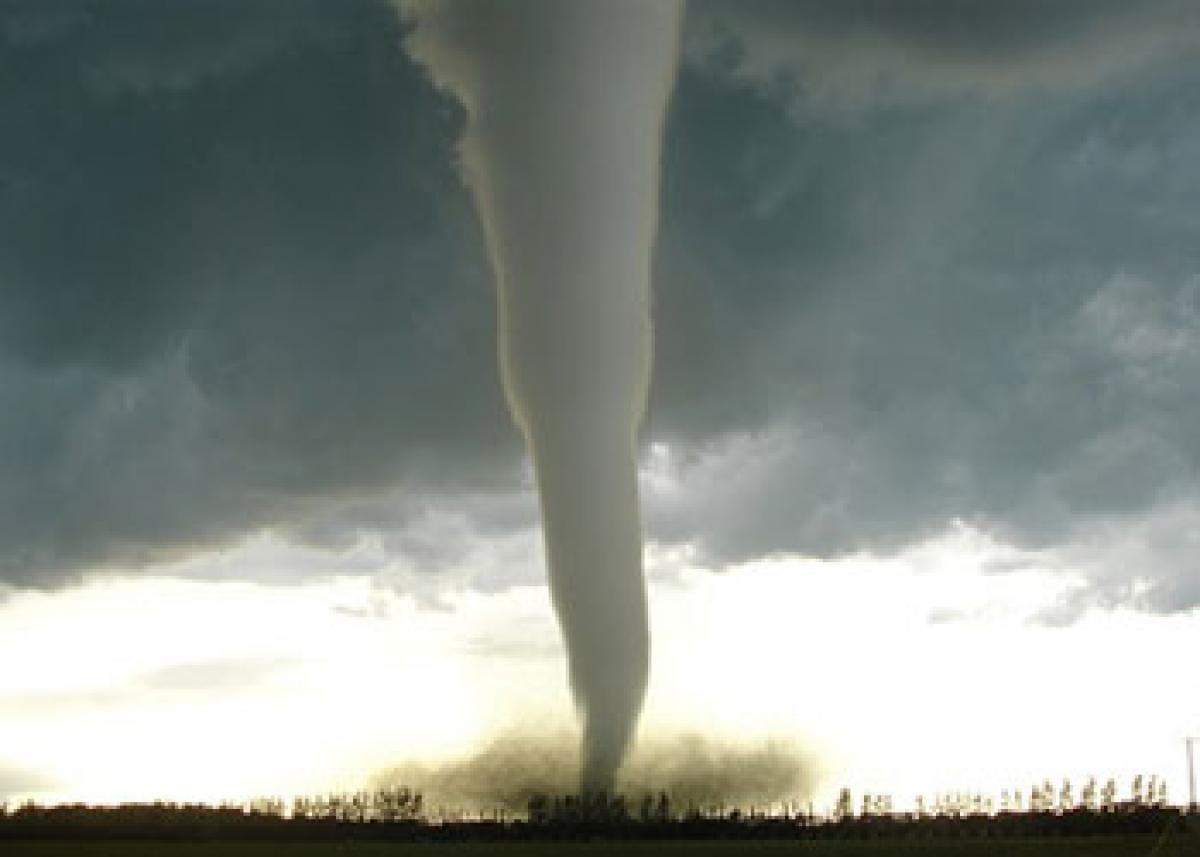Live
- Pushpa 2 Theatre Canteen Owner Bites Customer’s Ear in Gwalior
- RG Kar tragedy: Statement of forensic doctor who took pictures of victim’s body crucial for CBI
- Include Valmiki community in ST list, MP Ambica pleads
- Nara Lokesh Urges Rapid Investment Approvals to Boost Employment in MSME Sector
- Chandrababu Advocates Strict Measures for Social Welfare and Infrastructure Development in AP
- Show of brotherhood by Vijayan, Stalin at event to honour Dravidian icon
- District Collectors’ conference with CM begins
- Celebrations kick off in Saudi Arabia to welcome FIFA World Cup 2034
- Google Unveils Jules AI to Help Developers Fix Code Errors
- Bengaluru Techie’s Tragic Suicide Sparks Outrage Over Family Disputes and Legal Failures
Just In

There is strong evidence that the Earth is already one degree Celsius hotter than at the start of the 20th century - and the past four years have been the hottest on record. All this is a a foretaste of a hotter, drier and wetter future, says an international researcher.
New Delhi: There is strong evidence that the Earth is already one degree Celsius hotter than at the start of the 20th century - and the past four years have been the hottest on record. All this is a a foretaste of a hotter, drier and wetter future, says an international researcher.
He said climate change is already happening and will continue to happen as more heat-trapping greenhouse gases and short-lived climate pollutants accumulate in the atmosphere.
"While mitigation is necessary to control climate change, adaptation is essential to face the hotter, drier, wetter future," Kathmandu-based ICIMOD's programme manager Arun B. Shrestha told IANS.
At the Conference of Parties (COP) 21 in Paris last year, the governments agreed to "hold the increase in the global average temperature to well below two degrees Celsius above pre-industrial levels and pursue efforts to limit the temperature increase to 1.5 degrees".
Shrestha said these commitments are highly ambitious but the plans developed so far cannot avoid a rise of three degrees Celsius.
UN weather agency the World Meteorological Organization said in terms of global averages, each of the past several decades has been significantly warmer than the previous one.
The period 2011-2015 was the hottest on record and 2015 -- because of a powerful El Nino phenomenon -- was the hottest since modern observations began in the late 1800s.
Along with the rising temperatures, climate change is disrupting the seasons and increasing the frequency and intensity of extreme events such as droughts and heavy rainfall.
And when it comes to the mountains, the indications are that changes will manifest in much stronger ways.
The Mountain Research Initiative, a scientific organisation that addresses global change issues in mountain regions around the world, warns that warming will be much stronger in high elevation areas, such as the Hindu Kush Himalayas, where the impact will be compounded by biophysical fragility and socio-economic vulnerability.
Kathmandu-based International Centre for Integrated Mountain Development (ICIMOD), along with its partners, has been conducting scientific research on climate change to support policy and action to reduce climate impacts and vulnerabilities.
According to a climate and water atlas, "Mapping an uncertain future: Atlas of climate change and water in five crucial water basins in the Hindu Kush Himalayas", the mountain range extending west of the Himalayas are warming significantly faster than the global average.
The atlas, published last year by ICIMOD, and two Norwegian entities - GRID-Arendal and the Centre for International Climate and Environmental Research (CICERO) - said the temperatures across the Hindu Kush will increase by about one to two degrees Celsius, in some places by four to five degrees, by 2050.
The atlas also warns that precipitation will change, with that in summer increasing in most parts of the region. The number of rainfall events is expected to decrease, but with more water falling during each event, causing both floods and droughts.
The Hindu Kush Himalayan region is home to 210 million people and provides water to over 1.3 billion people - more than the entire continent of Europe.
To counter mitigations of climate change, Shrestha, who is ICIMOD's programme manager for the river basins and cryosphere and atmosphere regional programmes, said adopting climate smart villages models, along with flexible and integrate farming with weather information is the right approach.
At the catchment scale, he said, community-based flood early warning systems like the one implemented in Assam by ICIMOD and its partners have increased the resilience of the people.
In addition to floods, droughts also need to be addressed through integrated drought management, the researcher added.

© 2024 Hyderabad Media House Limited/The Hans India. All rights reserved. Powered by hocalwire.com







